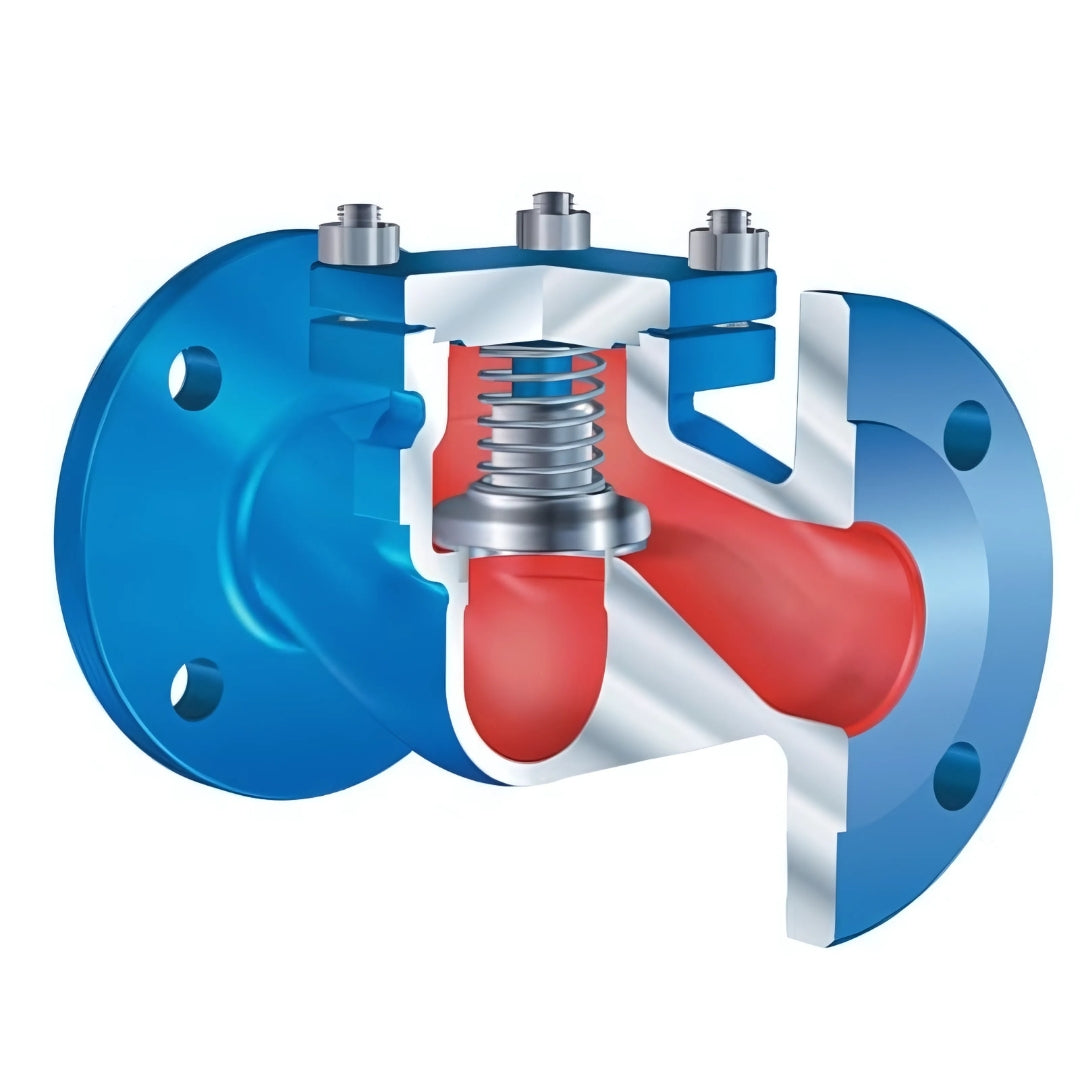Steam Valves
ARI CHECKO-V Lift Check Valve (Flanged PN25, Nodular Iron Body)
ARI CHECKO-V Lift Check Valve (Flanged PN25, Nodular Iron Body)
Couldn't load pickup availability
The ARI CHECKO-V Lift Check Valve with PN25 flanged connections and a nodular iron body is engineered to prevent reverse flow in pipeline systems, protecting pumps, compressors, and control valves from potential damage. This non-return valve uses a vertical lift disc mechanism that responds automatically to pressure changes — allowing flow in one direction and sealing tightly when flow reverses.
Constructed from nodular cast iron (ductile iron), the body provides excellent strength, shock absorption, and durability, making it suitable for a wide range of general-purpose applications. The PN25 pressure rating supports medium-pressure systems typically found in heating circuits, water distribution, and low-to-mid pressure steam systems. The flanged design allows for secure installation and straightforward maintenance, with internal access available for cleaning or servicing.
Manufactured by ARI Armaturen, a leader in industrial valve solutions, the CHECKO-V offers a cost-effective yet dependable solution for ensuring safe and efficient one-way flow control.
Key Features
Nodular Iron Body
Durable and resilient with good pressure resistance and thermal stability for industrial service.
PN25 Flanged Ends
Designed for medium-pressure systems up to 25 bar with easy integration into standard flanged pipelines.
Vertical Lift Check Mechanism
Automatically closes to block reverse flow, reducing the risk of damage to critical equipment.
Compact In-Line Design
Ideal for use in both vertical and horizontal installations without compromising space.
Low Maintenance Access
Flanged design simplifies inspection and servicing of internal components.
Suitable for a Wide Range of Applications
Used in water, steam, heating, and utility systems in commercial and industrial settings.
Share

FAQ's
What is the difference between a valve and an actuator?
What types of actuators are available?
The main types of actuators are:
Pneumatic actuators – use compressed air for fast, reliable operation.
Electric actuators – use electrical power for precise control.
Hydraulic actuators – use fluid pressure for high-torque applications.
Each type offers unique advantages depending on the environment, media, and system control needs.
How do I choose the right actuator for my valve?
To select the correct actuator, consider:
Valve type and torque requirement
Power source available (air, electric, or hydraulic)
Operating environment (temperature, humidity, hazardous area)
Control signal type (on/off or modulating)
Matching actuator torque and compatibility with the valve’s ISO mounting ensures reliable performance.
What are the main types of valves used in automation?
The most common valves in automated systems include:
Ball valves – for tight shutoff and quick operation.
Butterfly valves – for larger flow control with compact design.
Globe valves – for precise throttling and flow regulation.
Check valves – to prevent backflow.
Gate valves – for full bore flow isolation.
What’s the difference between a double-acting and spring-return actuator?
Double-acting actuators use air (or power) to both open and close the valve.
Spring-return actuators use air to open (or close) the valve, and a built-in spring to automatically return it to a safe position when power or air is lost — ideal for fail-safe operation.
How often should valves and actuators be serviced?
Regular maintenance intervals depend on operating conditions, but a good rule of thumb is to inspect every 6–12 months.
This includes checking for leaks, lubrication, seal wear, and actuator responsiveness to prevent unexpected downtime.

